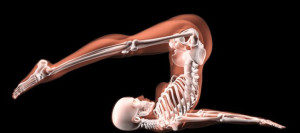
Last Friday’s (3rd February 2017) edition of The Times ran an article with the headline, Pilates Not Painkillers The Best Cure For Backache, based on the latest research by Manuela Ferreira and a team of scientists at the George Institute in Sydney.
For those who missed the article by The Times Health Editor, Chris Smyth and who don’t subscribe to The Times online, below are the key points from it…
Taking drugs for back pain is largely pointless, an overview of research has concluded. Anti-inflammatory pills such as ibuprofen are widely used as a first choice for patients with lower back pain. However, scientists found that they made so little difference that most people would not notice the effect. Exercise is usually recommended instead, which for some patients could include Pilates, yoga or stretching.
With paracetamol previously shown to be ineffective and opiates of little help, the findings mean that there is no good drug treatment for a condition that affects one in ten people.
Manuela Ferreira of the George Institute in Sydney, senior author of the study, said: “Back pain is the leading cause of disability worldwide and is commonly managed by prescribing medicines such as anti-inflammatories. Our results show anti-inflammatory drugs actually only provide very limited short-term pain relief. They do reduce the level of pain but only very slightly, and arguably not of any clinical significance.”
Her team analysed 35 trials involving 6,000 patients using non-steroidal anti-inflammatory drugs (NSAIDs), of which ibuprofen is one of the most common, for conditions such as back and neck pain and sciatica.
Only one in six patients treated with the drugs received any pain relief that they would not have got from a placebo, and that was so small it probably made no difference to their lives, they report in the Annals of the Rheumatic Diseases.
The drugs more than doubled the risk of problems such as bleeding and stomach ulcers. Dr Ferreira said: “When you factor in the side-effects, which are very common, it becomes clear these drugs are not the answer to providing pain relief to the many millions of [people] who suffer from this debilitating condition every year.”
A study in 2015 found that back pain had overtaken heart disease as the biggest cause of years spent in ill health in Britain. Gustavo Machado, another of the researchers, said that sufferers “are taking drugs that not only don’t work very well, they’re causing harm”.
Recent guidance from the National Institute for Health and Care Excellence (Nice) recommended drugs such as ibuprofen to control pain. Dr Machado said that those guidelines should not be ripped up but warned that drugs should only be prescribed after taking the risk of side-effects into account.
He said: “Patients with back pain should consider an exercise programme to help them manage their condition, eg aerobic exercises, strengthening/stretching exercises, Pilates, yoga, core-stability exercises.”
The Nice review concluded that exercise and psychological therapy appeared to be the only effective treatments. Acupuncture is now considered no better than a placebo.
Dr Machado said that patients were being encouraged to have tests and surgery that often did them little good because doctors failed to get to the root cause of their pain. “This is definitely a result of poor management, where patients are not properly assessed using evidence-based care,” he said. Stephen Ward, the consultant who led the development of the Nice guidance, said: “No drug seems to be the answer for back pain. Can they help in the short term? Probably, a bit.”
He said that averaging all patients risked masking significant benefits for some people and pointed out that only 4 per cent of those taking NSAIDs experienced side-effects. John Newton, of Public Health England, said: “Being overweight and physical inactivity are two causes of back pain that we can all do something about. Eating a good diet, moving our muscles more and raising our heart rate all help to prevent musculoskeletal problems.”
